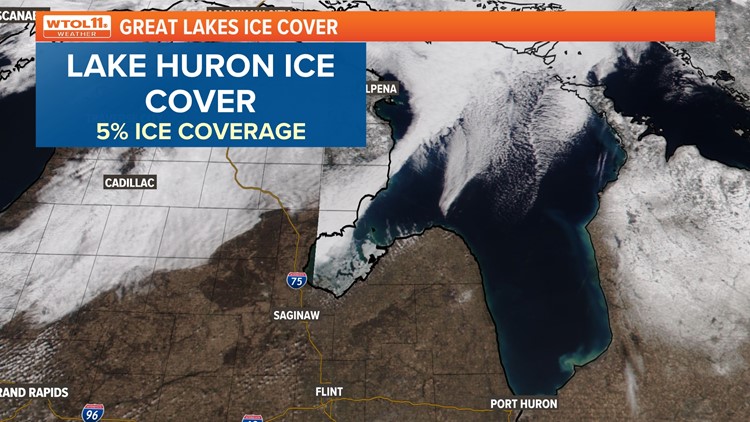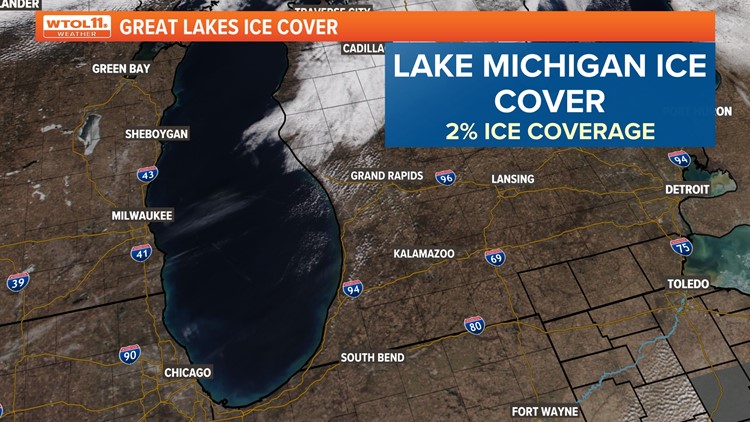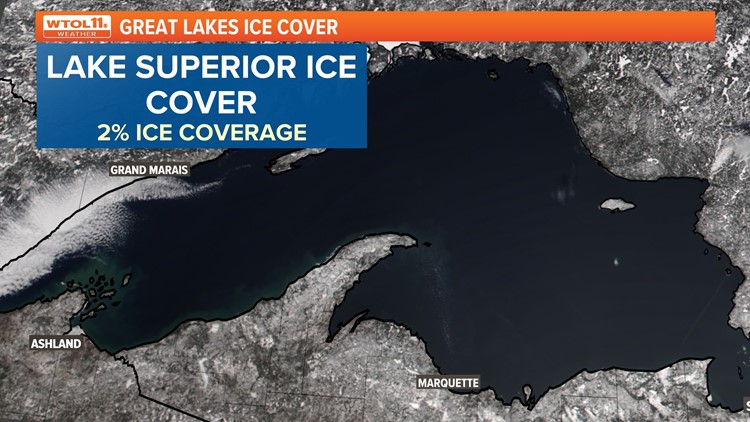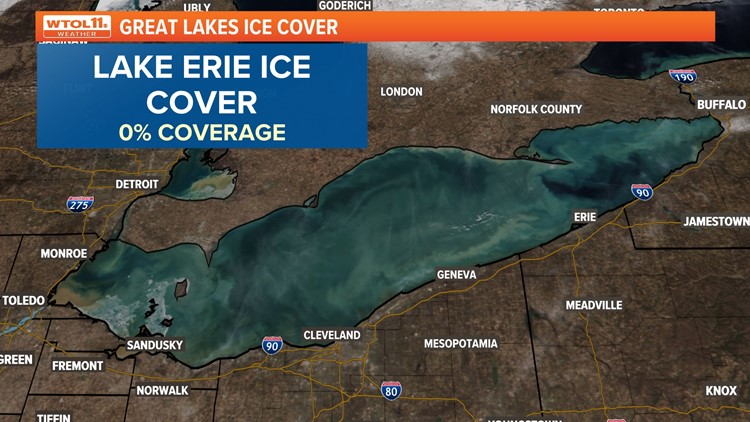TOLEDO, Ohio — The Great Lakes are continuing to struggle with forming any ice at all as we continue through February and toward the last month of winter. Mid-February is usually the high point for the most ice coverage on the Great Lakes, but just like the past several years, that simply hasn't been the case.
According to Climate Central, a non-profit organization that examines climate trends, long-term records show a 25% decrease in basin-wide ice cover. It also demonstrates a trend toward fewer frozen days across the Great Lakes since 1973.
Data from the National Oceanic and Atmospheric Administration indicates ice coverage across all lakes is far below what it is in an average year: 60% of the total Great Lakes surface area should be covered by ice by mid-February. As it stands in 2024, 3.9% of the lakes' total surface is covered by ice - the lowest percentage ever recorded.


In January, ice coverage spiked after a bout of extreme cold, before melting again to below-normal levels.
PREVIOUS COVERAGE: Twenty people rescued from a Lake Erie ice floe
The U.S. Great Lakes region is getting wetter at some of the fastest rates in the country. The Upper Midwest has experienced more precipitation in the form of rain than snow, causing ice to be less prevalent.

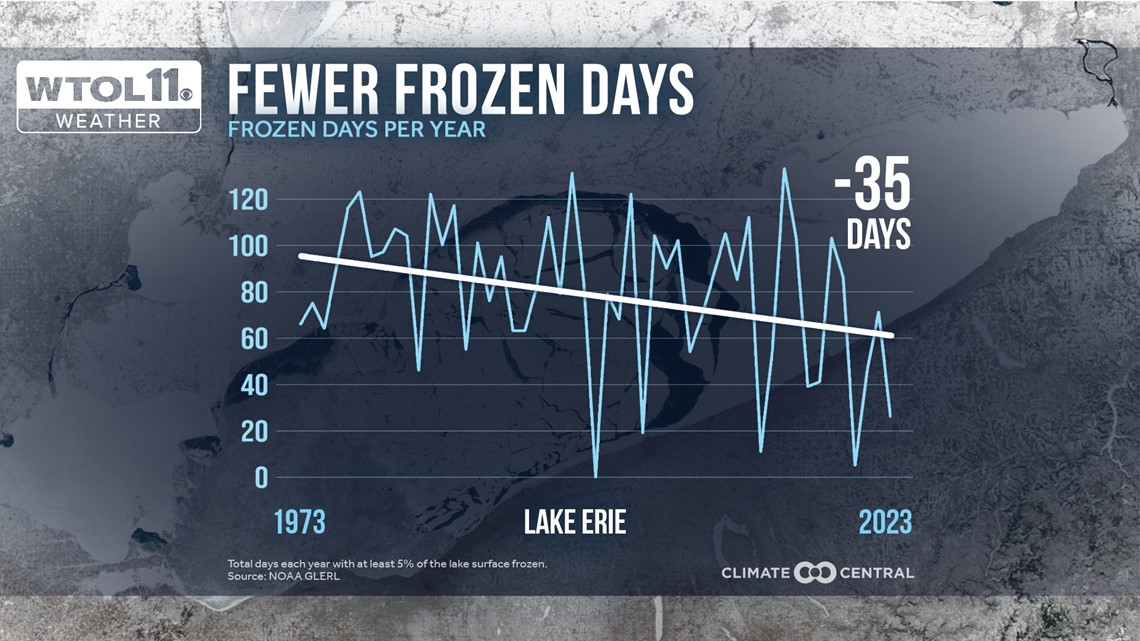
The lakes themselves are also warming. The Great Lakes are among the fastest-warming lakes in the world, according to Climate Central. Despite lake-to-lake and year-to-year variability, long-term records generally show an increase in temperatures — especially in the upper Great Lakes: Superior, Michigan, and Huron.
Included below is a gallery of ice coverage across all five Great Lakes as of mid-February:
Great Lakes ice coverage by lake, mid-February 2024
Along with warming waters, the lakes are also experiencing a decline in winter ice. This could have a lasting impact on ecosystems, culture, and recreation — and implications for commercial industries like hydropower generation and fishing, Climate Central said.
Climate scientists explained that while ice coverage can vary naturally from year-to-year, long-term trends supported by data indicate warmer water and decreased ice are representative of the overall warming global climate.
MORE GREAT LAKES STORIES: Great Lakes archaeologist, expert talks structure revealed in Lake Erie's receded waters
In the future, heat-trapping emissions and continued global warming, the Great Lakes will likely continue to experience and overall trend of warmer surface waters and decreased ice coverage, scientists said. As the shallowest - but southernmost - Great Lake, Lake Erie could see completely ice-free winters in the future.
An El Nino winter, mild temperatures and fewer snow events will continue to have the Great Lakes low-ice or ice-free for many winters to come.
RELATED VIDEO



